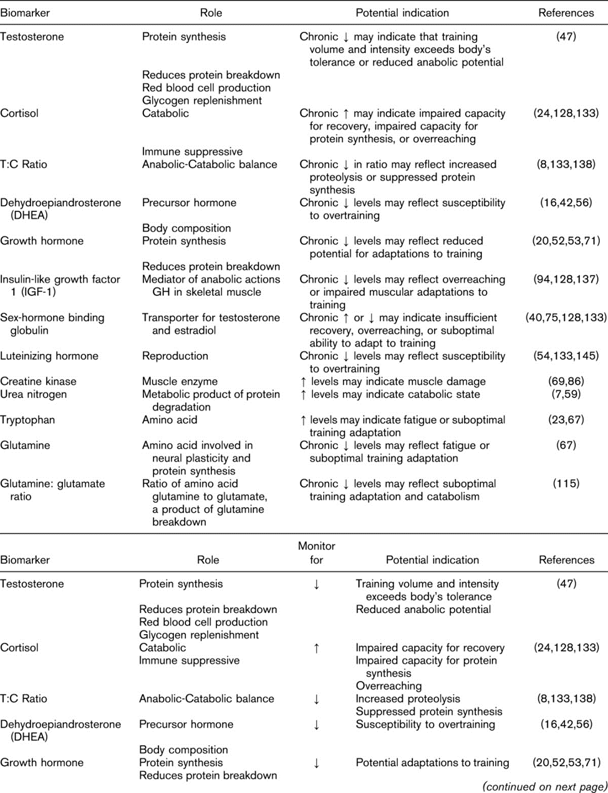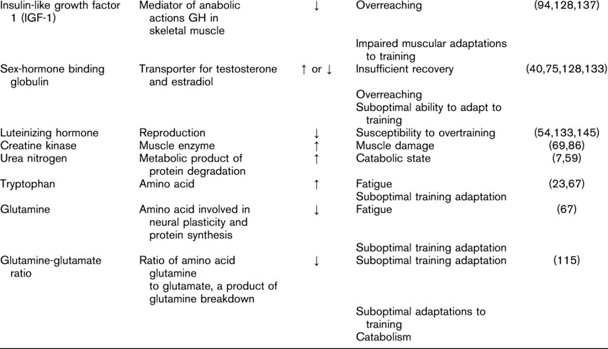What biomarkers have you seen that can typically be out of optimal range in high-performance athletes?
It is important to ensure adequate protein, micronutrients, and hydration. Monitoring nutritional status, markers of muscle breakdown, and markers of inflammation and oxidative stress should be consistently carried out during training.
A plant-based diet is vital to good health and can provide healthy complex carbohydrates, fats, fiber, phytonutrients, antioxidants, anti-inflammatory compounds, and some protein.
When training for hypertrophy, it is especially important to get enough protein, especially if eliminating high-quality animal-based proteins altogether. You’ll need at least 1.3-2g/kg in order to maintain and build muscle. Ordinarily, intense exercise can increase serum creatinine due to increased muscle breakdown. Since serum creatinine reflects muscle mass, lower levels could reflect increased breakdown without needed replenishment from dietary protein (Samra 2012).
You may see increases up to four-fold in certain biomarkers after exercise, reflecting muscle breakdown. These include myoglobin, creatine kinase, LDH, and AST. Troponin can increase slightly as well (Brancaccio 2010).
A number of biomarkers can be monitored for high-performance athletes although individual variations will depend on genetic profile, metabolism, and the quality and adequacy of the diet, including intake and repletion. The following biomarkers may be especially important to monitor (Lee 2017, Brancaccio 2010):
Blood urea nitrogen (BUN)
- Increases may be due to dehydration, excess protein intake, endogenous protein catabolism, exhaustive training, infection, fever, glucocorticoids, or reduced renal clearance.
- Decreases may be associated with inadequate protein intake, malnutrition, starvation, or liver impairment.
Protein
- Levels of total protein, albumin, and globulin may provide some insight into protein status though non-athletic factors may alter serum levels.
- More advanced nitrogen studies or amino acid profile studies can provide additional information on protein status.
- Athletes may need at least 1.3-2 grams of protein per kg daily to maintain muscle mass and nitrogen balance.
- Athletes following vegan diets must be especially cognizant of consuming adequate protein including a full array of essential amino acids.
- Amino acids of particular importance include branched-chain amino acids, taurine, glycine, tryptophan, glutamine.
Blood glucose
- Low blood glucose or reduced glycogen availability can lead to fatigue and hypoglycemia.
- Insufficient carbohydrate intake will lead to more rapid glycogen depletion.
Fats
- Omega-3 fatty acids EPA and DHA, reduce inflammation, muscle soreness, and pain perception. They are especially important to recovery, training adaptation, performance, neuromuscular function, and nerve conduction.
- Omega-3 recommendations for elite athletes may be as high as 6-8 grams per day (versus 3 grams or less per day for non-athletes).
- Optimal omega-3 index goal is above 8%, and 8-11% for athletes (Pedlar 2019).
- Fat utilization during exercise can lower resting levels of triglycerides and cholesterol.
CBC with differential
- Assess for anemia, including iron indices such as ferritin, TIBC, and transferrin saturation.
- Monitor WBCs, increases can reflect muscle damage, sterile inflammation, and immune response
Micronutrients may become depleted
- Deficiencies may be common including B vitamins, vitamin D, vitamin E, beta-carotene, magnesium, iron, zinc, and chromium.
- Pay close attention to electrolytes including sodium, potassium, chloride, bicarbonate, magnesium, and calcium, especially in the event of excess losses in sweat.
Inflammation and oxidative stress biomarkers can increase
- Stress and overtraining can trigger “sterile inflammation”
- Acute-phase proteins can increase including CRP, ferritin, fibrinogen, serum amyloid A, E-selectin, von Willebrand factor (endothelial dysfunction), etc.
- Cytokine markers of inflammation can increase including IL-1B, TNF-a, IL-6.
- Markers of oxidative stress can increase including reduced glutathione versus oxidized glutathione, superoxide dismutase, catalase, malondialdehyde, sulfhydryl groups, and thiobarbituric acid-reactive substances
Muscle breakdown increases
- Creatine kinase (obtain isoforms to identify the source, i.e., cardiac versus skeletal muscle.)
- Myoglobin
- Lactate dehydrogenase
- Biomarkers specific to skeletal muscle breakdown include skeletal muscle troponin 1, skeletal muscle-specific enzymes.
- AST, carbonic anhydrase II, aldolase, ALT, and uric acid may also increase with muscle injury
Bone biomarkers help monitor increased risk of stress fractures
- IGF-1 tends to be lower in those with osteoporosis and an increased risk of a stress fracture.
- IGF-1 was found to correlate with bone mineral density.
Additional biomarkers related to exercise and athletic performance can be found below.


Source: Lee, Elaine C et al. “Biomarkers in Sports and Exercise: Tracking Health, Performance, and Recovery in Athletes.” Journal of strength and conditioning research vol. 31,10 (2017): 2920-2937. doi:10.1519/JSC.0000000000002122 This is an open-access article distributed under the terms of the Creative Commons Attribution-Non Commercial-No Derivatives License 4.0
References
Brancaccio, Paola et al. “Biochemical markers of muscular damage.” Clinical chemistry and laboratory medicine vol. 48,6 (2010): 757-67. doi:10.1515/CCLM.2010.179
Lee, Elaine C et al. “Biomarkers in Sports and Exercise: Tracking Health, Performance, and Recovery in Athletes.” Journal of strength and conditioning research vol. 31,10 (2017): 2920-2937. doi:10.1519/JSC.0000000000002122 This is an open-access article distributed under the terms of the Creative Commons Attribution-Non Commercial-No Derivatives License 4.0.
Pedlar, Charles R et al. “Blood Biomarker Profiling and Monitoring for High-Performance Physiology and Nutrition: Current Perspectives, Limitations and Recommendations.” Sports medicine (Auckland, N.Z.) vol. 49,Suppl 2 (2019): 185-198. doi:10.1007/s40279-019-01158-x This article is distributed under the terms of the Creative Commons Attribution 4.0 International License ()
Samra, Manpreet, and Antoine C Abcar. “False estimates of elevated creatinine.” The Permanente journal vol. 16,2 (2012): 51-2. doi:10.7812/tpp/11-121

